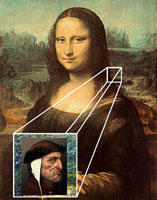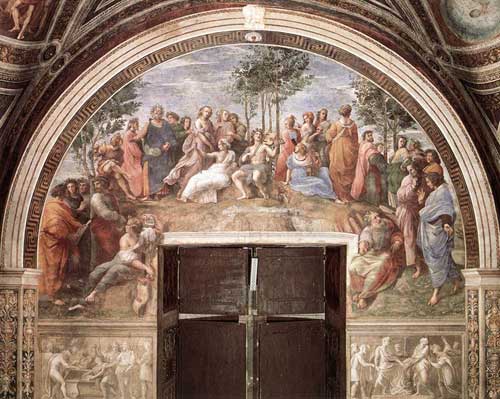Frontpage
of GOP-frettir
Forsíða
GÓP-frétta
Table of Contents
*
Efnisyfirlit
The secrets of Mona Lisa
and of Pala di San Barnaba
- and the Throne of Beatrice
- Italian article >>
Dante in Iceland
>> Articolo 09.2009 con le ultime scoperte di Giancarlo, qui in formato .pdf - Revealings in the painting
Mona Lisa: on Dante, Beatrice and Iceland:
>> Revealing the face of Dante
>> Revealing the three books of Dante
>> Revealing Beatrice
>> ..... Beatrice and her number
>> ..... GIOCONDA - The light of her eyes
>> ..... The last smile of Beatrice
>> Revealing Iceland
>> ..... and the Kjolur Route with people
>> ..... and an icelandic horse -
Destination Iceland - The secretes of Pala di San Barnaba
>> see italian paper in pdf >> Destinazione Island
Inspecting Botticelli's:
The Virgin and Child with Four Angels and Six Saints
- i.e.: Pala di San Barnaba -
The Throne of Beatrice -
>> See italian paper in pdf >> Verso la Candida Rosa dei Beati
Hér er sýnt
hvernig mynd
af Dante
er falin
í bakgrunni
málverksins.
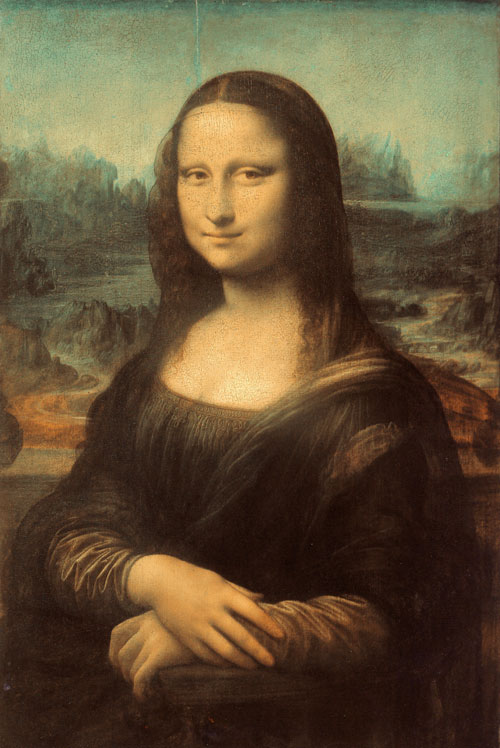
The painting of Mona Lisa by Leonardo daVinci
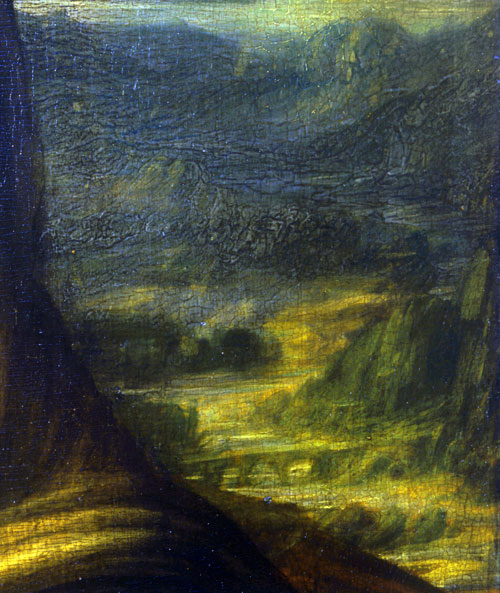
Looking above the left shoulder

The interesting square
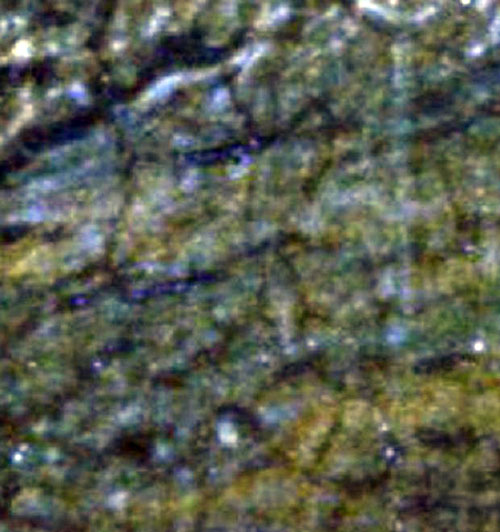
Hard to find ..
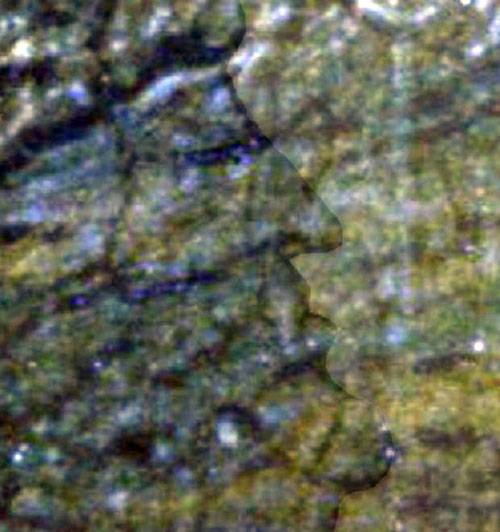
... but clearing the view ...
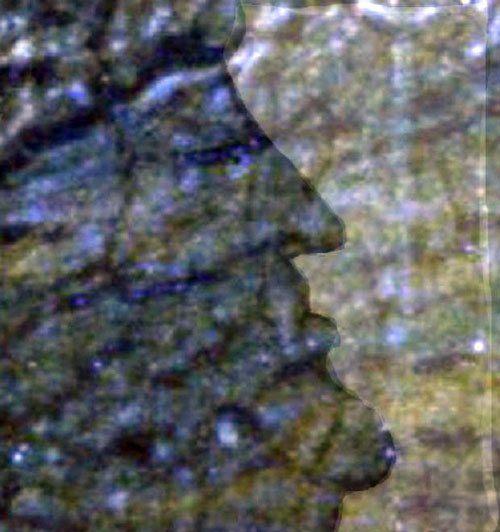
Dante becomes visible.
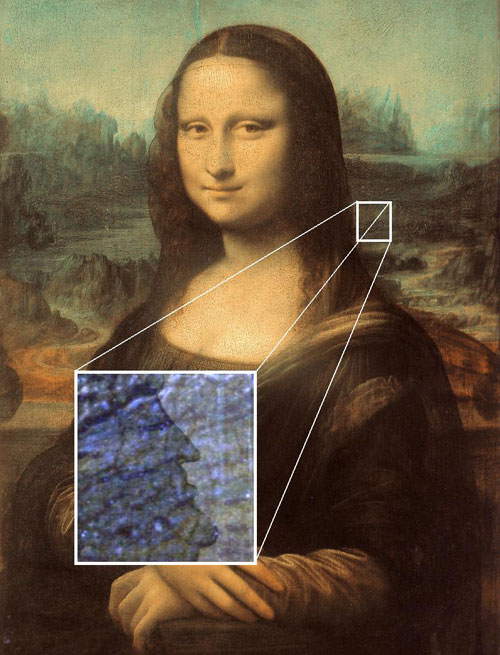
Dante is hidden behind Mona Lisa.
Revealing
the three books
Hér er sýnt
hvernig
málverkið
er látið túlka
vísbendingu
höfundar
ljóðsins
til lesandans
um að líta
undir yfirborð
textans til að
greina hans
raunverulegu
merkingu.
Orðið VEIL
hefur fleiri
en eina
merkingu
eins og orðið
SLÆÐA hefur
á íslensku.
Annars vegar
er hin algenga
merking um
höfuðklút
kvenna.
Hins vegar
getur eitthvað
verið sem hjúpað
slæðu eða hulu
sem gerir örðugra
að sjá hvað
undir býr.
Hér er beinlínis
bent á að óskýr
og torráðinn
texti ljóðsins
sé dularslæða
sveipuð yfir
raunverulega
merkingu
kvæðisins.
Inferno IX
O you possessed of sturdy intellects,
observe the teaching that is hidden here
beneath the veil of verses so obscure. (63)
In the Mona Lisa Leonardo plays with
the meaning of the word VEIL:
-
A cloth worn by women over the head, shoulder, and often face.
-
Something that conceals or hides: a veil of secrecy,
- here: this something is the veil of verses so obscure.
i.e.:
the obscurity of the verses is actually a veil of secrecy
meant to make the real message of the text harder to decipher.
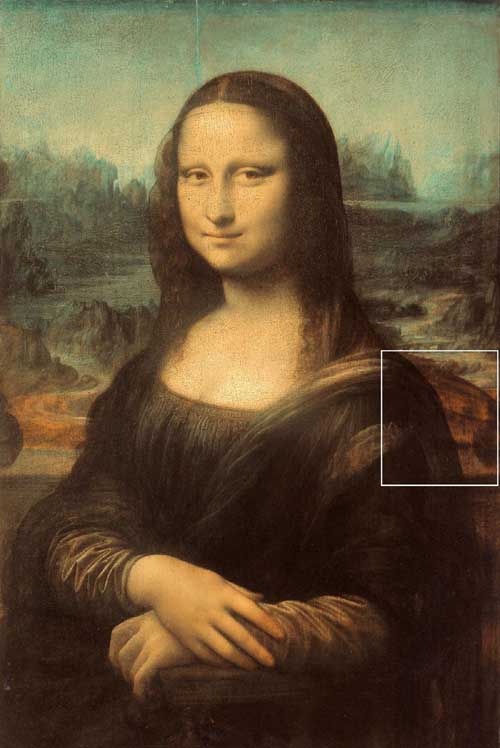
The obscure verses (3 books of the Comedy: Inferno, Purgatorio and
Paradiso) under the veil (of Mona Lisa).
Leyndardómar málverksins
Mona Lisa
The face of Dante hidden in the background tells us that the smile of Mona Lisa is Beatrice's smile. The secret of Mona Lisa is the one hidden beneath the veil of verses so obscure.
Beatrice - and her number
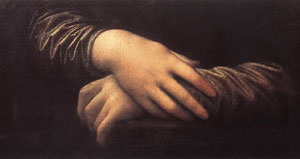
The simplest detail that shows the link between Mona Lisa and Beatrice is given by the hands: nine fingers are visible and nine is the number of Beatrice.
this number was in harmony with her to make it understood that at her birth all nine of the moving heavens were in perfect relationship to one another.
If anyone thinks more subtly and according to infallible truth, it will be clear that this number was she herself this lady was accompanied by the number nine so that it might be understood that she was a nine, or a miracle (Vita.Nova, XXIX, 2-3)
Back
to Main* Til
baka á aðalsíðu
Table of Contents *
Til baka í efnisyfirlit
Leyndardómar málverksins
Mona Lisa
The light of her eyes
The name of the painting "GIOCONDA" may have a
different reason from what is believed.
It may refer to Beatrice: Twice in the Comedy the light in her eyes is
described using the word GIOCONDA (joyous).
«Noi siam qui ninfe e nel ciel siamo stelle;
pria che Beatrice discendesse al mondo,
fummo ordinate a lei per sue ancelle.
Merrenti a li occhi suoi; ma nel giocondo
lume ch'è dentro aguzzeranno i tuoi
le tre di là, che miran più profondo».
Pg XXXI, 111
e vidi le sue luci tanto mere,
tanto gioconde, che la sua sembianza
vinceva li altri e l'ultimo solere.
Pa XVIII, 57
English:
"Here we are nymphs; in heaven, stars; before
she had descended to the world, we were
assigned, as her handmaids, to Beatrice;
we'll be your guides unto her eyes; but it
will be the three beyond, who see more deeply,
who'll help you penetrate her joyous light."
Pg XXXI, 111
and saw such purity within her eyes,
such joy, that her appearance now surpassed
its guise at other times, even the last.
Pa XVIII, 57
Leyndardómar málverksins
Mona Lisa
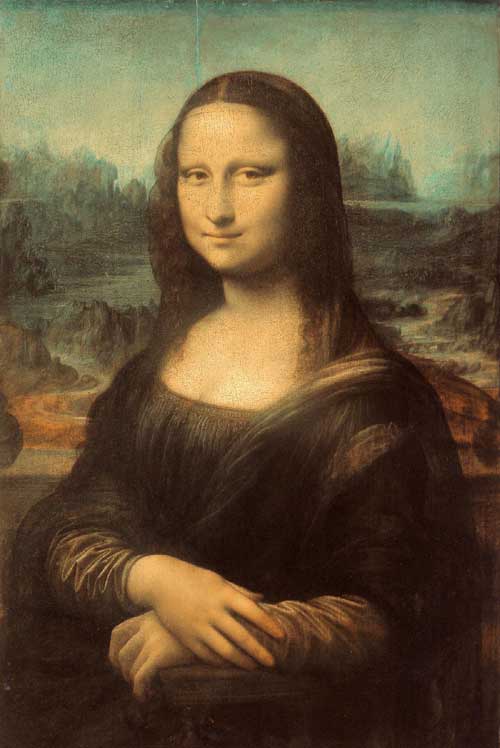
Mona Lisa refers to these verses of the poem.
Beatrice is seated on her throne, she looks at Dante and smiles at him
for the last time.
Where I expected her, another answered:
I thought I should see Beatrice, and saw
an elder dressed like those who are in glory.His gracious gladness filled his eyes, suffused
his cheeks; his manner had that kindliness
which suits a tender father. "Where is she?"I asked him instantly. And he replied:
"That all your longings may be satisfied,
Beatrice urged me from my place. If youlook up and to the circle that is third
from that rank which is highest, you will see
her on the throne her merits have assigned her."I, without answering, then looked on high
and saw that round her now a crown took shape
as she reflected the eternal rays..."O lady, you in whom my hope gains strength,
you who, for my salvation, have allowed
your footsteps to be left in Hell, in all
the things that I have seen, I recognize
the grace and benefit that I, depending
upon your power and goodness, have received.You drew me out from slavery to freedom
by all those paths, by all those means that were
within your power. Do, in me, preserveyour generosity, so that my soul,
which you have healed, when it is set loose from
my body, be a soul that you will welcome."So did I pray. And she, however far
away she seemed, smiled, and she looked at me.
Then she turned back to the eternal fountain.Pa XXXI, 93
Back
to Main* Til
baka á aðalsíðu
Table of Contents *
Til baka í efnisyfirlit
The Screts of
Mona Lisa
Leyndardómar
málverksins
Mona Lisa
and the Kjolur Route
The face of Dante hidden in the background tells us that the smile of Mona Lisa is Beatrice's smile. The secret of Mona Lisa is the one hidden beneath the veil of verses so obscure. This secret leads beyond the Pillars of Hercules to the land of the extreme North, Thule.
Hliðstólpar Gíbraltarsunds.
Sá nyrðri óumdeilt Gíbraltar en sá syðri umdeildur.
Sjá/See Wikipedia
* *
(Málverkið sýnir
aðeins lítið eitt
í fótstykki
hliðstólpanna.)
Back to Main
The wild flight of Ulysses
and the high flight of Dante to Iceland
In the Comedy Dante mentions the voyage of Ulysses beyond the Pillars of
Hercules. After five months of navigation in the ocean, Ulysses sights a
high mountain but encounters a whirlwind from it that sinks his ship.
The voyage of Ulysses is a wild flight, the voyage of Dante
beyond the Pillars of Hercules is a high flight (Pa XV, 54).
Wild was the decision of Ulysses to go towards South. Dante succeeds reaching the Garden of Eden following a different direction. Leonardo faithfully follows the hidden message of the Comedy and suggests how to reach the Garden of Eden, Iceland:
beyond the Pillars of Hercules the right direction is North.
(The Louvre painting merely has the projecting bases of columns on either side).
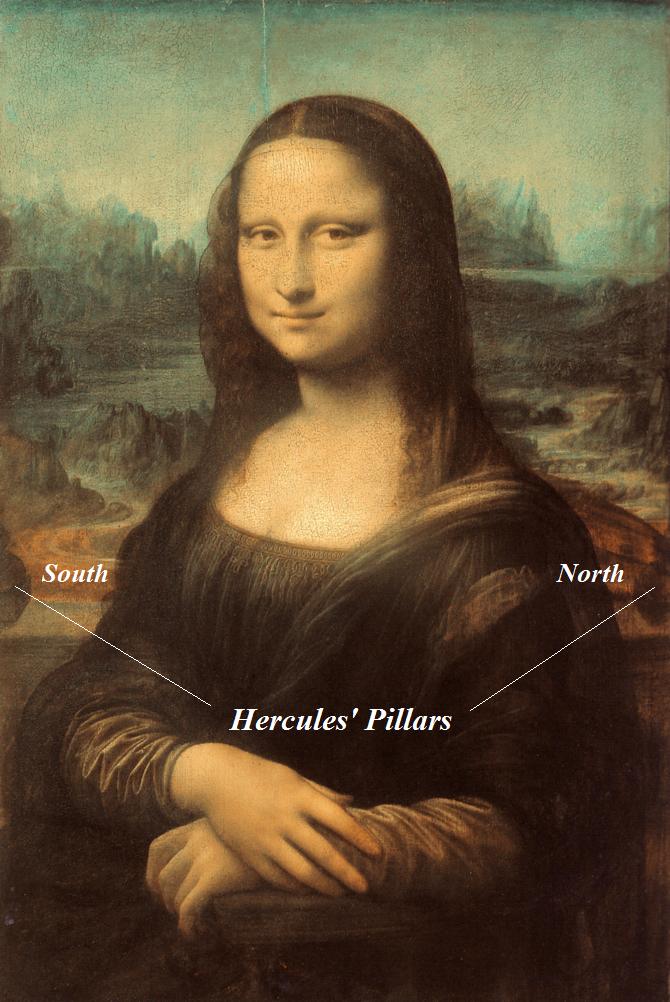
**
Inf. XXVI, 126
And I and my companions were already
old and slow, when we approached the narrows
where Hercules set up his boundary stonesthat men might heed and never reach beyond:
upon my right, I had gone past Seville,
and on the left, already passed Ceütaand having turned our stern toward morning, we
made wings out of our oars in a wild flight
and always gained upon our left-hand side.
Back
to Main* Til
baka á aðalsíðu
Table of Contents *
Til baka í efnisyfirlit
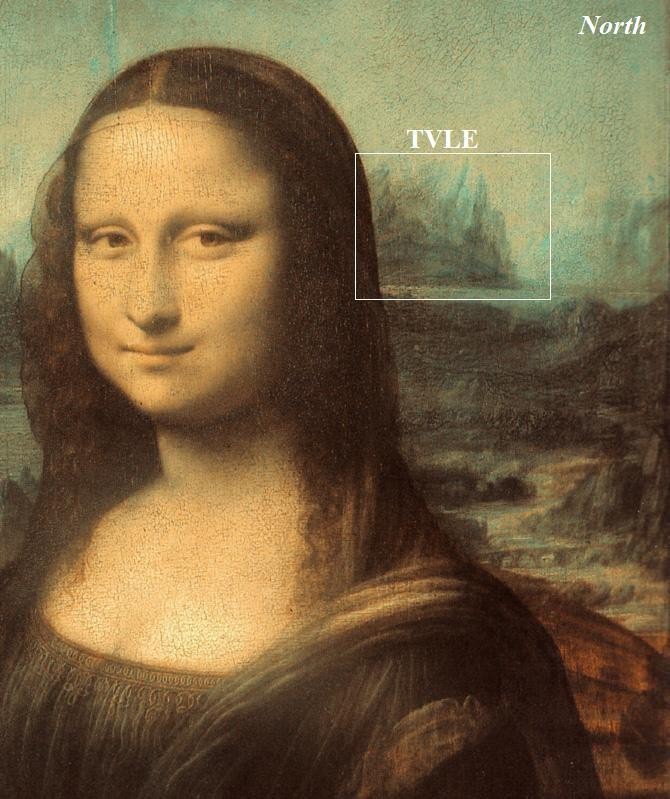
The Kjölur route - and men walking
Whatever is coded in the Comedy is also coded in the Mona Lisa.
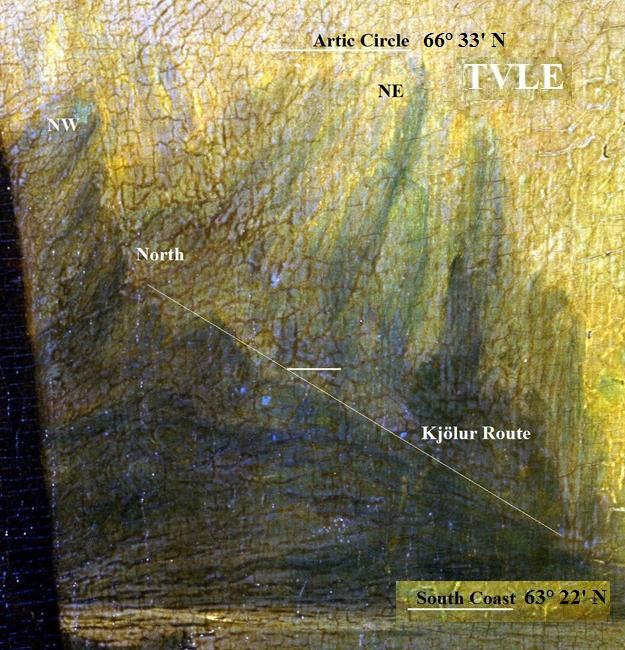
In the middle of the island we can recognize the Kjölur route that goes straight to North.
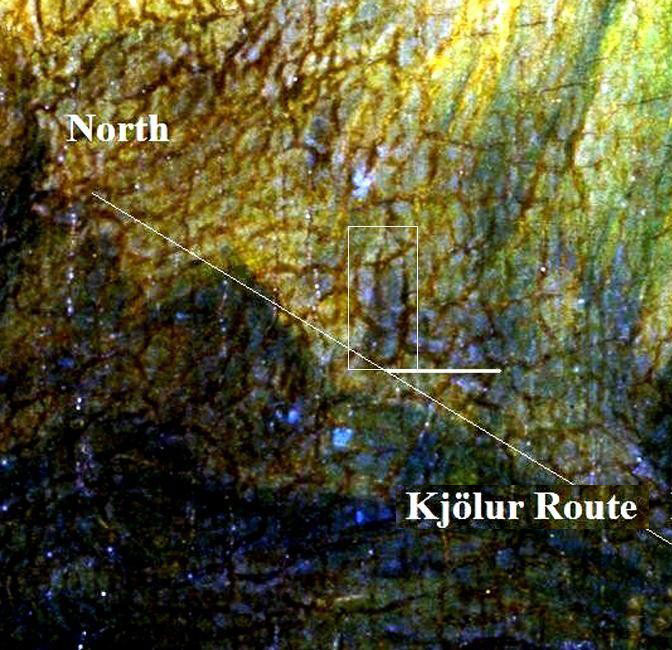
Men are walking at the right latitude along the route.
It is the latidude of the point along the Jökulfall river where Dante
enters the divine forest.
The Kjölur route - and the icelandic horse
In the same picture under the men walking along the
Kjölur Route
there is a horse. It seems an Icelandic horse at the tölt.
Only icelandic horses are born with the ability to tölt.
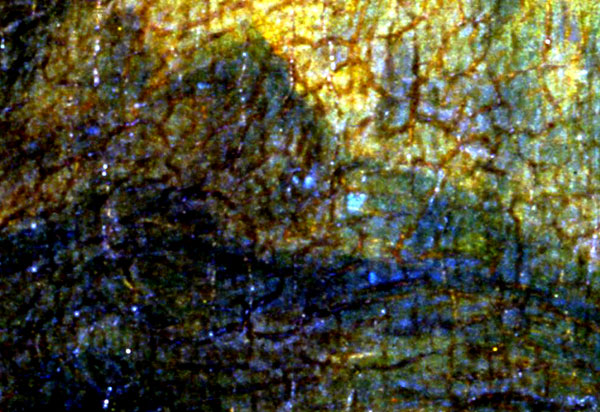
The horse

A tolting horse
Back
to Main* Til
baka á aðalsíðu
Table of Contents *
Til baka í efnisyfirlit
from the pdf-file
in italian:
Destinazione Island
between Dante and Iceland.
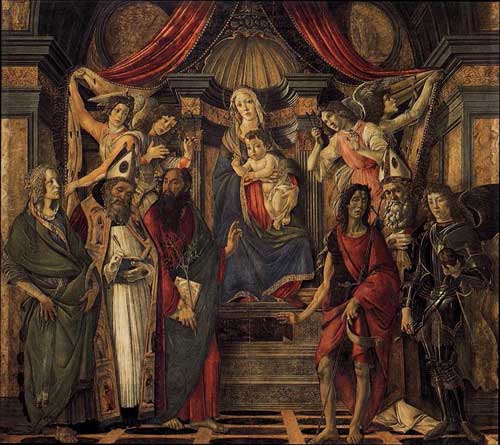
The Virgin and Child with Four Angels and Six Saints
i.e.: Pala di San Barnaba by Sandro Botticelli.
His real name was Alessandro di Mariano Filipepi, 1445-1510,
and he was one of the leading painters of the Florentine Renaissance.
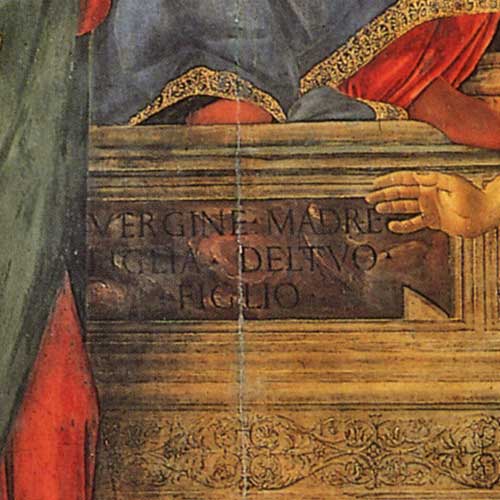
In the painting it is possible to read the most famous verse
of the Comedy (Paradiso, 1):
Vergine Madre, figlia del tuo figlio,
Virgin mother, daughter of your Son,
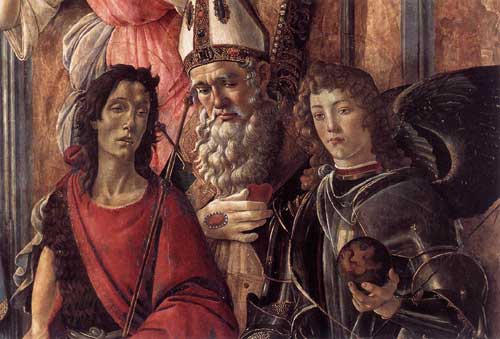
Saint John the Baptist is pointing at these verses with his right hand,
in the same time he is looking at the globe
in the hand of Archangel Michael.
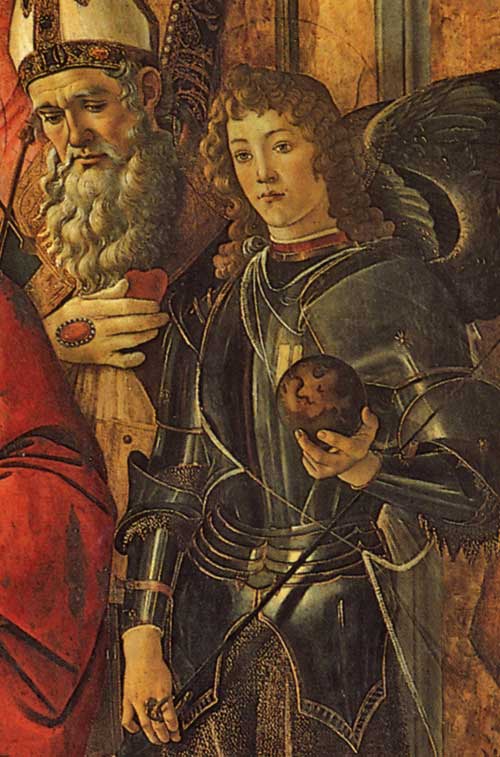
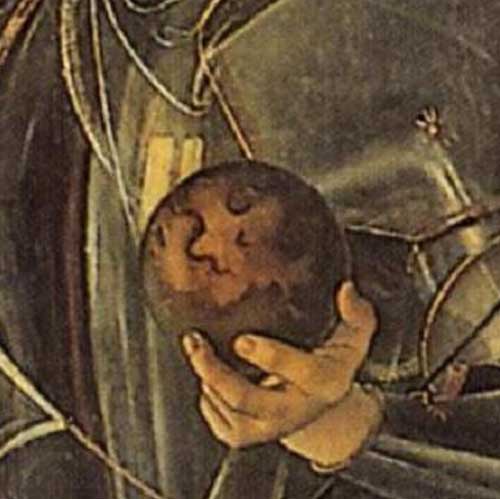
The globe is the earth with Iceland and the river Jokulfall.
In the Italian paper >> Verso la Candida Rosa
dei Beati
we learn of the Throne of Beatrice, the fish-shaped rock and the knoll,
and the hill shaped as a woman breast with the nipple and how those
things relate to objectives in the paintings:
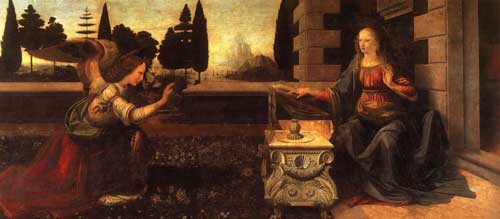
In the Annunciation by Leonardo there is the amphitheatre under the hill.



the hill shaped as a woman breast with the nipple


the Throne of Beatrice

the fish-shaped rock
In the Parnaso by Raphael ...

... Dante is entering the divine forest with Virgilio and Stazio.

A strange detail: Dante is clasping the Comedy in his arm.
A possible reading:
the never found original manuscript of the Comedy
is hidden in Iceland among other ancient documents.
In the Primavera by Botticelli it is possible to draw the flow of the Jökulfall river.

The line of the latitude of the knoll is the horizontal line along the nipples of the women.

The flow of the Blákvísl river is along the left arm
of Beatrice,
the woman in the center of the painting.

The line of the arrow reaches the precise point of the
amphitheatre along the Jökulfall river.
(in the italian article there was no place for the pictures of
Primavera)
